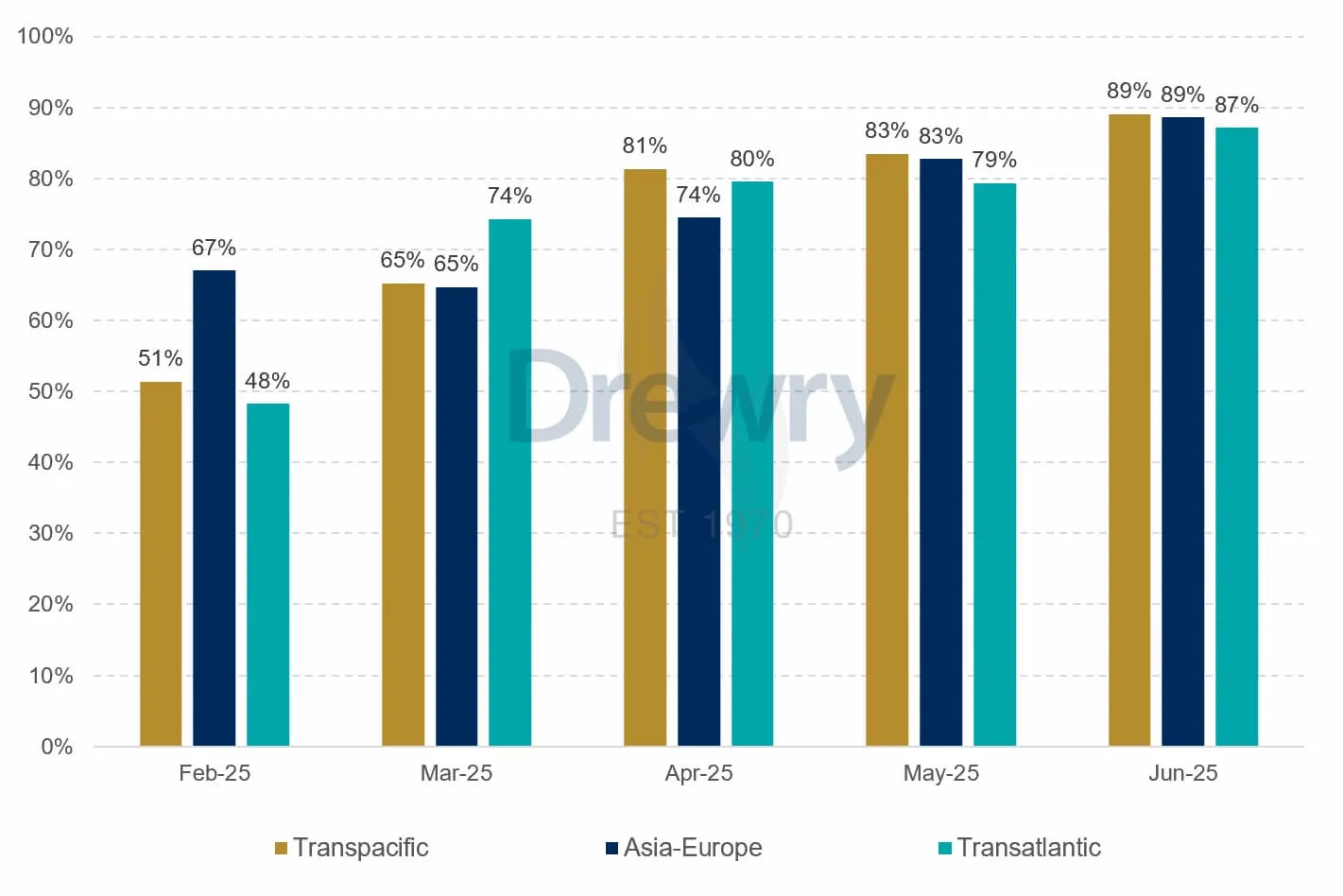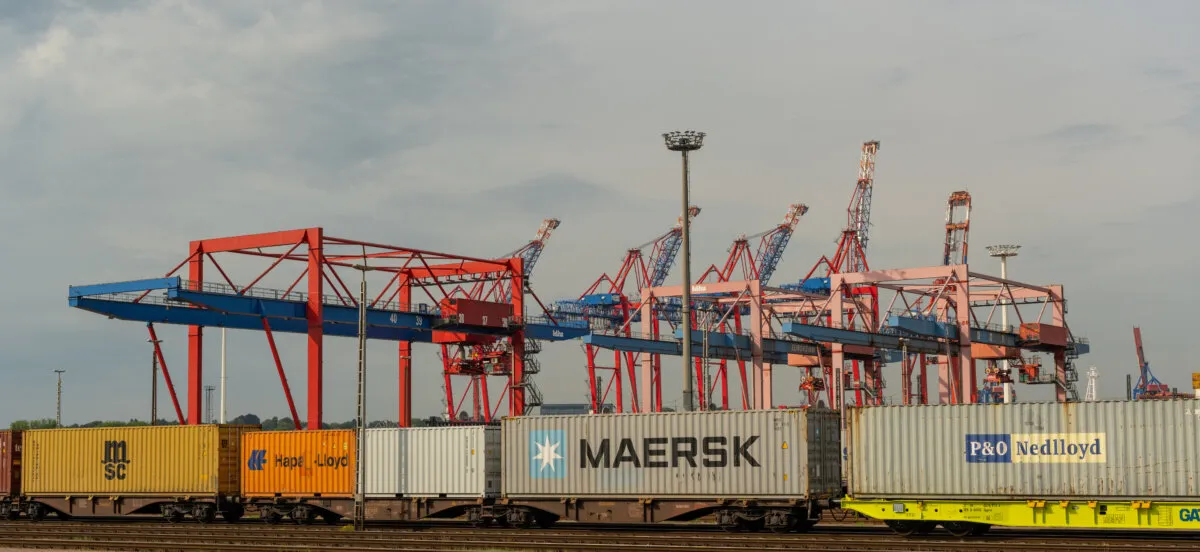On 28 July 2025, the British analytics firm Drewry published new data on the progress of the Gemini Cooperation Alliance. According to the report, the mainline vessels operated by Hapag-Lloyd and Maersk have substantially improved their schedule reliability: while in February – the alliance’s launch month – punctuality rates varied by trade lane from 48 percent (Atlantic routes) to 67 percent (Europe–Asia), by June these figures had already risen to between 87 and 89 percent.
Drewry defines a vessel as punctual if it reaches its destination with a maximum delay of 24 hours. In the container shipping sector, average reliability levels of around 50 per cent are generally considered normal.

Source: Drewry Container Capacity Insight
Gemini relies on central transhipment hubs – with impact
According to Drewry, the June punctuality rate would have been even higher were it not for delays at congested ports such as Antwerp in Europe and various terminals in Asia.
Targeted transhipment at less congested ports – including Bremerhaven, Rotterdam, and Tanger Med (Morocco) – helped counteract these delays. Drewry notes that Gemini deliberately uses these locations as preferred transhipment hubs – a strategy that has proven effective.
Schedule stability through a hub-and-spoke system
Maersk and Hapag-Lloyd are deploying a so-called hub-and-spoke model within Gemini. Similar to the aviation industry, large vessels call only at major ports (hubs), from which containers are distributed via smaller feeder services.
Drewry highlights that this approach helps reduce delays – particularly because the shipping lines control their own terminal capacities, enabling more effective coordination and operational management.
A comparison with other alliances shows that in June, the average punctuality of Gemini vessels on transpacific and Asia–Europe routes was at least twice as high as that of the Ocean Alliance and the Premier Alliance, according to Drewry’s 28 July 2025 analysis.

Port congestion remains a limiting factor
Reliability, however, remains heavily dependent on the state of the ports being called. Drewry found that in June, punctuality for Antwerp arrivals was around 20 percent lower than for Rotterdam – a direct consequence of port congestion.
“When a port is severely congested, even optimised fleet and terminal management is no longer sufficient to prevent schedule deviations,” Drewry said.
For importers with facilities in Antwerp, this means that 90-percent schedule reliability is currently out of reach.
Economic viability remains the key test
While Gemini’s performance on punctuality is impressive, Drewry points out that the economic sustainability of the model remains to be seen. The new structure must also prove cost-effective in comparative terms.
A preliminary assessment is not yet possible, as Hapag-Lloyd’s Q1 results only cover one month of the new alliance. The next quarterly report, due on 14 August, is expected to provide the first concrete insights into the so-called “cost test” of the hub-and-spoke model.









